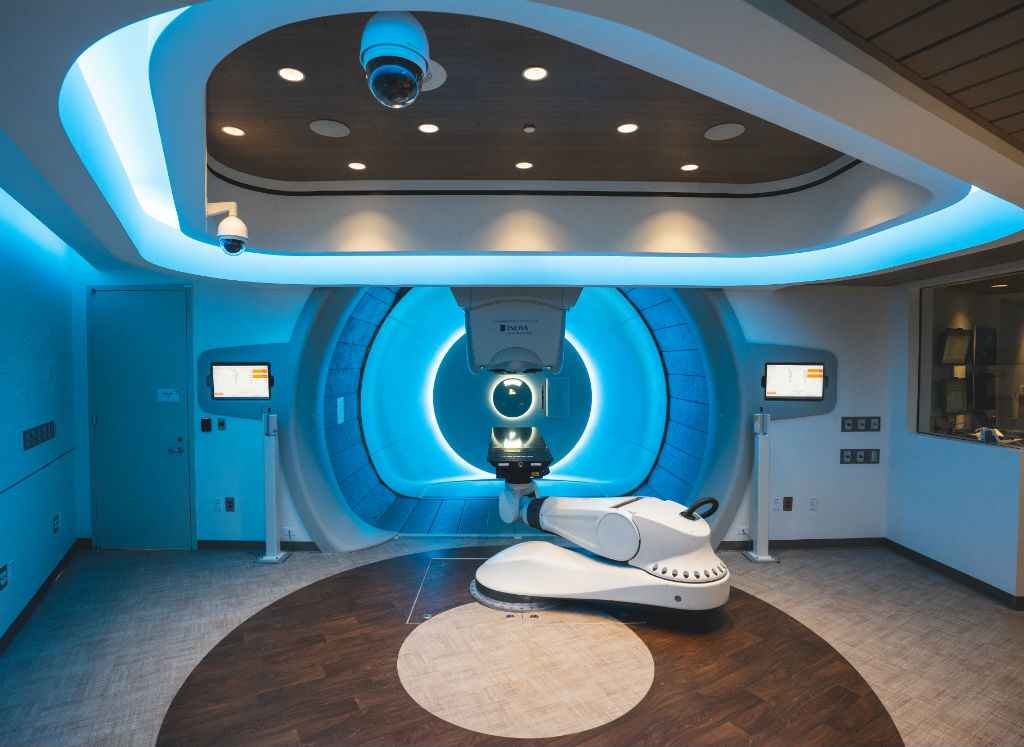In a groundbreaking development, researchers in the United States have taken a major leap forward in cancer care through Advanced Proton Therapy for Cancer Treatment. Using a technique called step-and-shoot spot-scanning proton arc therapy (SPArc), the team successfully treated a patient suffering from adenoid cystic carcinoma—a rare cancer of the salivary glands. The results, published in the International Journal of Particle Therapy, demonstrate how this next-generation treatment can target tumours with remarkable accuracy while preserving healthy surrounding tissues.
What Makes Proton Therapy Different?
Proton therapy has emerged as a highly precise form of radiation therapy that uses proton particles, unlike traditional X-rays or photon-based treatments. The major advantage lies in its ability to stop at the tumour site, delivering maximum energy where it’s needed and reducing radiation exposure to nearby healthy cells. This makes it particularly suitable for treating cancers in sensitive or complex anatomical areas like the brain, spine, and head and neck region.
Understanding the SPArc Technique
SPArc—or step-and-shoot spot-scanning proton arc therapy—represents an evolution of conventional proton therapy. In this method, the proton beam is delivered in calculated “spots” while the machine arcs around the patient in a pre-determined pattern. This allows for more flexibility and enhanced control over radiation delivery. The technique precisely “sculpts” the radiation dose around the tumour, thus offering higher tumour control with fewer side effects.
How SPArc Compares with Existing Techniques
To assess the true benefit of SPArc, the research team compared its effectiveness with two other radiation methods: SFO-IMPT (Single Field Optimization Intensity-Modulated Proton Therapy), which is currently the clinical standard, and the fully dynamic SPArc model still under development.
The findings were striking. SPArc reduced radiation exposure to vital structures significantly:
- Brainstem exposure was reduced by 10%
- Optical chiasm exposure saw a 56% reduction
These reductions are critical, especially in head and neck cancers where vital organs are located in close proximity to the tumour site.
A Real-World Example: Improved Quality of Life
The first patient treated using SPArc was a 46-year-old woman diagnosed with parotid gland cancer. Her treatment included 33 sessions, during which she experienced only mild skin irritation. More impressively, she maintained her ability to eat and continued working throughout the therapy. This case highlights the potential of Advanced Proton Therapy for Cancer Treatment to not just prolong life but also enhance its quality during treatment.
The Treatment Protocol in Detail
Each SPArc session began with a cone-beam computed tomography (CBCT) scan to ensure accurate positioning. A specially designed computer programme was then used to calculate the best proton beam delivery points, factoring in changes in tumour size and the patient’s body over time. Adjustments were made dynamically to maintain precision throughout the treatment period.
Why SPArc Matters
SPArc holds particular promise for treating cancers located near sensitive organs or in structurally complex areas. By delivering a more focused dose, it reduces the chance of damaging healthy tissues. This can be especially important for pediatric cancers, brain tumours, and head and neck malignancies, where even slight tissue damage can result in long-term consequences.
Challenges to Widespread Adoption
While the benefits are evident, Advanced Proton Therapy for Cancer Treatment is not without its challenges. The cost of proton therapy centers, which can run into millions of dollars, remains a major hurdle. Moreover, insurance coverage is not universal, and the treatment is currently best suited for specific cases rather than the broader cancer population.
The Road Ahead: Fully Dynamic SPArc
Although SPArc has already shown encouraging results, its fully dynamic version is still under development and awaiting regulatory clearance. Experts believe that once approved, this advanced system could redefine radiation therapy by offering even more tailored treatments with minimal risks.
Conclusion
The introduction of Advanced Proton Therapy for Cancer Treatment, particularly with the SPArc technique, is a beacon of hope in modern oncology. By offering a way to target tumours with unprecedented precision while reducing damage to healthy tissues, this technology has the potential to transform cancer treatment protocols globally. As research continues and access expands, SPArc could become the new gold standard in radiation therapy—ushering in an era of safer, smarter, and more effective cancer care.



